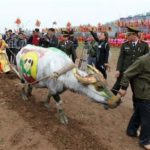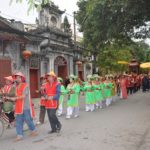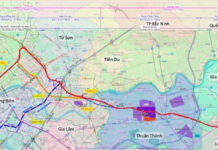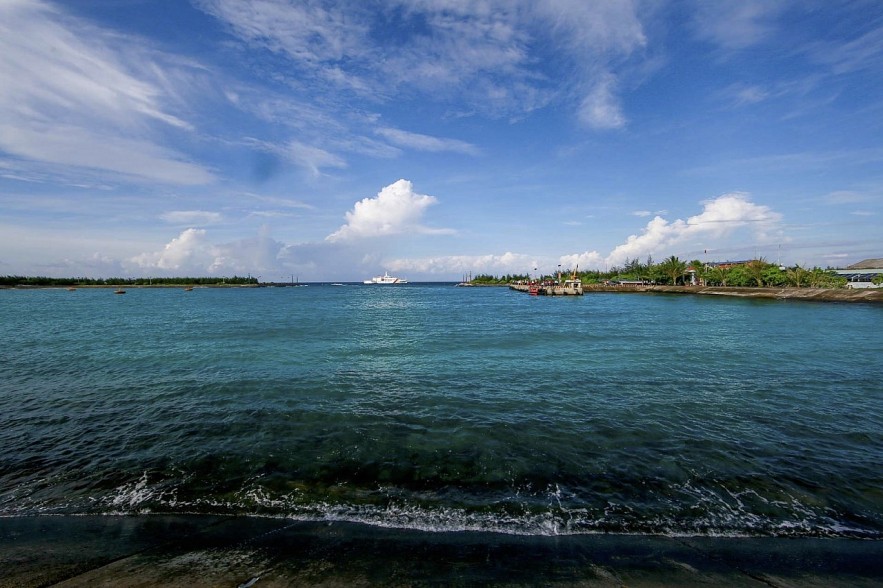 |
| Sinh Ton island, Truong Sa island district, Khanh Hoa province. Photo: Pham Anh Tuan |
Regarding the issue of sovereignty over the Hoang Sa (Paracel) and Truong Sa (Spratly) archipelagos, Vietnam has full legal basis and historical evidence to prove that Vietnam has established and exercised real sovereignty over these two archipelagos, at least since the 17th century, when they were not yet under the sovereignty of any country.
Studying extensively and consistently
Up to now, there have been many documents, ancient bibliographies, and maps found in archives and libraries at home and abroad, showing sufficient historical and legal basis to affirm Vietnam’s sovereignty over the two archipelagos.
There have been hundreds of research works, books, newspapers, and articles published, affirming the process of exploiting, establishing and enforcing Vietnam’s sovereignty over the two archipelagos. That process took place early, from the 17th century and continued until later.
Research on Hoang Sa, Truong Sa and the East Sea issue are huge and extremely important tasks.
Up to now, in Vietnam and abroad, there have been many historians, politicians, diplomats, and cultural scholars who spent a lot of time and effort focusing on collecting and researching.
They evaluated the sources and announced the results confirming that the Hoang Sa and Truong Sa archipelagos belong to Vietnam’s sovereignty.
The number of research works and books written on Vietnam’s sovereignty over the Hoang Sa and Truong Sa archipelagos and the East Sea issue is increasing, consistently affirming Vietnam’s sovereignty over the two archipelagos.
They affirm Vietnam’s sovereignty in the exclusive economic zone according to international law.
Vietnam’s policy on the East Sea
Its important strategic location in terms of economics, politics, military, and problems left by history created disputes between countries with common interests in this region.
In particular, China’s unreasonable demands for sovereignty in the East Sea, with the “cow tongue line” (nine-dash line) and the increasing pace of militarization of illegally occupied islands and reefs in the East Sea made the security situation in the East Sea increasingly tense and complicated.
In the context of the East Sea situation and in the current trend of international integration of seas and islands in the region and the world, the provisions of the international law of the sea are the most important legal basis for countries to apply in the process of negotiating and resolving disputes over sea and island sovereignty.
Although there are many controversies, Vietnam’s stance on the Hoang Sa (Paracel) and Truong Sa (Spratly) archipelagos is clear and consistent. Vietnam is the first and only state to exercise its sovereignty over the Hoang Sa and Truong Sa archipelagos in a peaceful, stable and continuous manner.
According to history, on the bilateral and multilateral levels, Vietnam has sufficient historical evidence and legal basis to assert its sovereignty over the two archipelagos.
Vietnam advocates resolving all disputes in the East Sea by peaceful means, on the basis of respect for international law and practice, especially the 1982 United Nations Convention on the Law of the Sea (UNCLOS), and in the spirit of the Declaration on the Conduct of Parties in the East Sea in 2022.
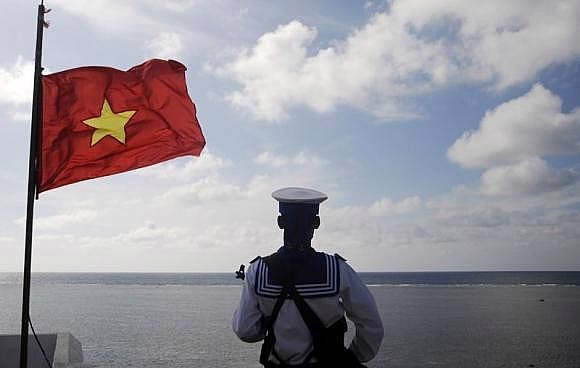 |
| Photo: Reuters |
Regarding China, both sides affirmed to resolve all disagreements through peaceful negotiations, friendship, mutual respect, and concern for each other’s legitimate interests.
The two countries, based on the common understandings reached between the two countries’ senior leaders and the agreement on basic principles guiding the settlement of maritime issues, on the basis of international law, aimed to build a Code of Conduct in the East Sea (COC).
For other countries in ASEAN with common interests in the East Sea such as Thailand, Brunei Darussalam, Malaysia, Malaysia, Indonesia, Vietnam, and all parties agreed on the policy of ensuring peace, stability, security and safety, freedom of navigation in the East Sea, resolving disputes by peaceful means, complying with international law, especially UNCLOS 1982 and DOC, towards building a COC.
Vietnam coordinated with other members to bring the Comprehensive and Progressive Agreement for Trans-Pacific Partnership (CPTPP) to meet the development interests of all members, contributing to promoting the growth and prosperity of countries and regions.
Vietnam, along with China and other countries in ASEAN, resolutely strives to build the East Sea into a sea of peace, stability and development in the world.

